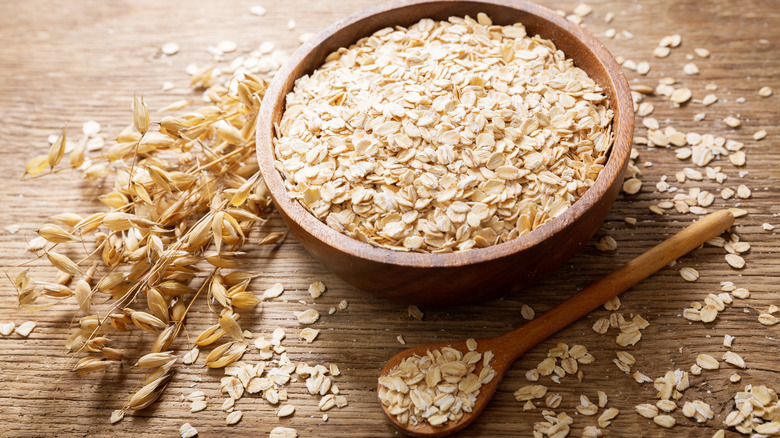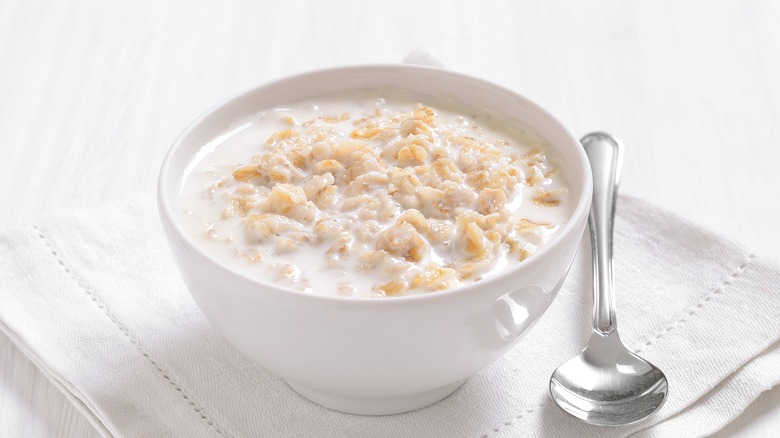What Oatmeal Is Actually Made Out Of
Colloquially speaking, the difference between oats and oatmeal may confuse some people because we eat both. After all, there is Samuel Johnson's elitist definition of oats: "Oats. A grain, which in England is generally given to horses, but in Scotland supports the people." Generally the terms seem to be used interchangeably.
The confusion increases when you consider that steel-cut oats and rolled oats also exist. Leaf explains that the difference between the two is, as their names suggest, in the preparation of each. Rolled oats go through a process of being steamed and flattened, while steel-cut oats are cut over and over again into bisections of bisections. These methods mean that the former is fluffier, while the latter is grainer.
Then there's overnight oats. Foods for Anti-Aging describes how, unlike oatmeal which is prepared just before you want it by boiling the oatmeal, overnight oats soak in cold ingredients like water or milk overnight. Foods for Anti-Aging claims that this method keeps the nutritional value of the oats, as they aren't cooked. There is, however, a larger amount of calories as you've introduced new ingredients. But what working through these permutations of oats doesn't get at, however, is what oatmeal actually is.
It's all about the oats
The reason that articles looking into the different types of oats focus on their preparation is that it's all oats. In fact, Merriam-Webster defines oatmeal as a "meal made from oats," though they clarify this with the second entry which states rolled oats is the true oatmeal. A meal, Merriam-Webster also explains, is the result of coarsely grinding the seeds of a cereal. So, oatmeal is made from oats.
Made How goes into greater detail about this. After the seeds are harvested, the oats go through a cleaning process. Then, they are steamed. After being cleansed of the various foreign matters of the field, the hull of that oat is removed. The Clinton Courier writes that the dehulling is essential as we cannot digest the exterior shell of the oat. The oats are then dried, which removes any bacteria-nourishing moisture and encourages the nutty flavor we associate with oatmeal. These dried oats are what is then either rolled or cut, depending on the product, and packaged.

